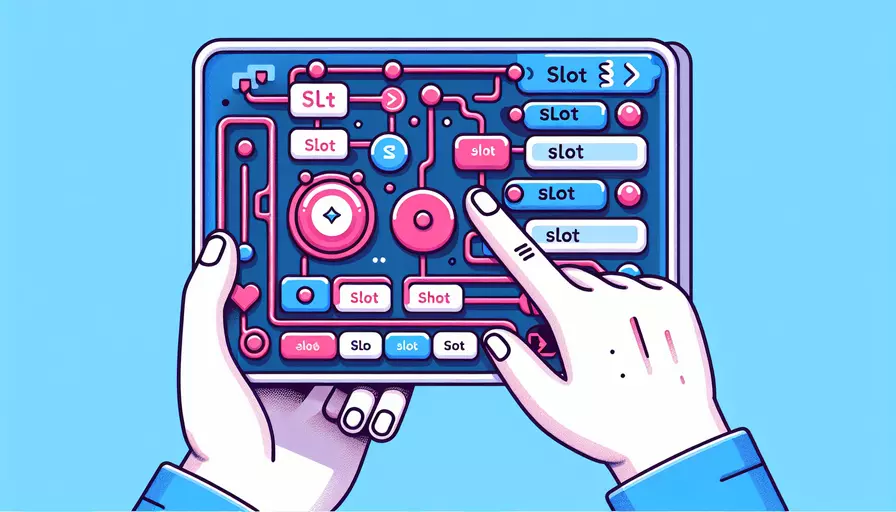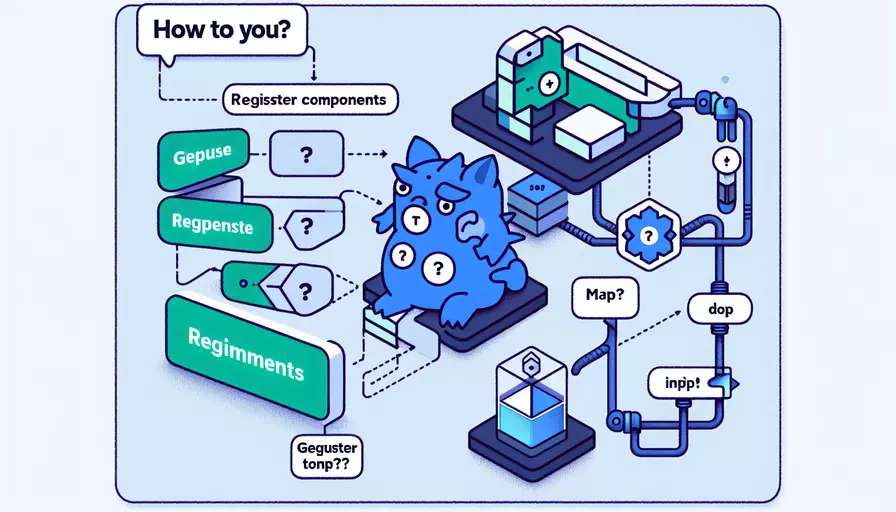vue中slot的作用与用法解析
发布时间:2025-03-04 19:38:44 发布人:远客网络

在Vue.js中,slot 是一个内容分发机制,用于在父组件中插入子组件的特定位置。具体来说,1、slot允许父组件向子组件传递任意的内容,2、它使得组件更具灵活性和可复用性,3、使用slot可以更好地组织和管理代码。接下来我们将详细介绍slot的用法、优势及其在实际项目中的应用。
一、SLOT的基本概念
slot是Vue.js提供的一个功能强大的特性,它允许你在父组件中定义内容,并将这些内容插入到子组件的特定位置。slot的基本语法如下:
<!-- 父组件 -->
<child-component>
<template v-slot:default>
<p>这是插入到子组件的内容</p>
</template>
</child-component>
<!-- 子组件 -->
<template>
<div>
<slot></slot>
</div>
</template>
在这个例子中,父组件通过<template v-slot:default>传递了一段内容到子组件的<slot>标签中。子组件会在<slot>标签的位置渲染这段内容。
二、使用SLOT的优势
使用slot有以下几个优势:
- 提高组件的灵活性:slot允许父组件动态地向子组件传递内容,使得子组件可以根据父组件的需求进行灵活调整。
- 增强组件的可复用性:通过slot,不同的父组件可以在相同的子组件中插入不同的内容,从而提高了组件的可复用性。
- 改善代码的组织和管理:slot使得组件间的依赖关系更加清晰,有助于代码的维护和管理。
三、SLOT的类型
Vue.js中的slot分为三种类型:默认slot、具名slot和作用域slot。
-
默认slot:最常见的slot类型,当没有指定名字时使用。
<!-- 父组件 --><child-component>
<p>默认slot的内容</p>
</child-component>
<!-- 子组件 -->
<template>
<div>
<slot></slot>
</div>
</template>
-
具名slot:可以为slot指定一个名字,用于在子组件中插入不同的内容。
<!-- 父组件 --><child-component>
<template v-slot:header>
<h1>具名slot的内容</h1>
</template>
<template v-slot:footer>
<p>这是footer部分</p>
</template>
</child-component>
<!-- 子组件 -->
<template>
<div>
<header><slot name="header"></slot></header>
<footer><slot name="footer"></slot></footer>
</div>
</template>
-
作用域slot:允许子组件向父组件暴露数据,父组件可以基于这些数据动态渲染内容。
<!-- 父组件 --><child-component>
<template v-slot:default="slotProps">
<p>{{ slotProps.text }}</p>
</template>
</child-component>
<!-- 子组件 -->
<template>
<div>
<slot :text="dataFromChild"></slot>
</div>
</template>
<script>
export default {
data() {
return {
dataFromChild: '这是子组件的数据'
};
}
};
</script>
四、SLOT的实际应用
slot在实际项目中有广泛的应用场景,比如:
-
布局组件:可以通过slot定义布局组件的不同区域,如头部、内容区、尾部等。
<!-- 布局组件 --><template>
<div>
<header><slot name="header"></slot></header>
<main><slot></slot></main>
<footer><slot name="footer"></slot></footer>
</div>
</template>
-
表格组件:在表格组件中使用slot,可以让父组件定义表格的每一列内容。
<!-- 表格组件 --><template>
<table>
<thead>
<tr>
<th v-for="header in headers" :key="header">{{ header }}</th>
</tr>
</thead>
<tbody>
<tr v-for="row in rows" :key="row.id">
<td v-for="cell in row.cells" :key="cell">{{ cell }}</td>
</tr>
</tbody>
</table>
</template>
-
自定义表单组件:使用slot可以让父组件定义表单的每一个输入项。
<!-- 表单组件 --><template>
<form>
<slot></slot>
</form>
</template>
五、SLOT的常见问题和解决方案
- 内容未显示:确保slot标签和传递内容的模板结构正确,检查slot名称是否匹配。
- 作用域slot的数据未传递:检查子组件是否正确暴露数据,父组件是否正确接收和使用这些数据。
- 具名slot的默认内容未显示:确保子组件中具名slot的默认内容未被覆盖。
六、总结与建议
slot是Vue.js中一个强大的工具,可以大大提高组件的灵活性和可复用性。在使用slot时,务必理解其工作原理和应用场景,避免过度使用导致代码复杂度增加。通过合理使用slot,可以实现更清晰、可维护的代码结构,提升开发效率。
建议:
- 充分理解slot的类型和用法,合理选择使用默认slot、具名slot和作用域slot。
- 在大型项目中使用slot,可以有效地组织和管理代码,提高组件的可维护性。
- 定期重构代码,确保slot的使用不会导致组件间的依赖关系过于复杂。
更多问答FAQs:
什么是Vue中的slot?
在Vue中,slot是一种用于插入内容的特殊标记。它允许您在父组件中定义一个模板,并在子组件中填充该模板。这样做的好处是可以更好地组织和重用组件。
如何使用Vue中的slot?
要在Vue中使用slot,首先需要在父组件中定义一个或多个slot。可以使用<slot>标签将内容插入到父组件中。然后,在子组件中使用<slot>标签指定内容的插入点。
下面是一个示例:
父组件模板:
<template>
<div>
<h1>父组件</h1>
<slot></slot>
</div>
</template>
子组件模板:
<template>
<div>
<h2>子组件</h2>
<p>这是子组件的内容。</p>
</div>
</template>
在使用父组件的地方,可以将任何内容插入到<slot>标签中,如下所示:
<template>
<div>
<parent-component>
<h3>这是插入到父组件的内容</h3>
<p>这是另一个插入到父组件的内容</p>
</parent-component>
</div>
</template>
什么是具名slot?
在Vue中,还可以使用具名slot来更精确地控制内容的插入位置。具名slot允许您在父组件中定义多个插入点,并在子组件中指定要插入的内容。
在父组件中,可以使用<slot>标签的name属性来定义具名slot。然后,在子组件中使用<template>标签的v-slot指令来指定要插入的内容。
下面是一个示例:
父组件模板:
<template>
<div>
<h1>父组件</h1>
<slot name="header"></slot>
<slot></slot>
<slot name="footer"></slot>
</div>
</template>
子组件模板:
<template>
<div>
<h2>子组件</h2>
<template v-slot:header>
<p>这是插入到header插槽的内容</p>
</template>
<p>这是子组件的内容。</p>
<template v-slot:footer>
<p>这是插入到footer插槽的内容</p>
</template>
</div>
</template>
在使用父组件的地方,可以像这样插入具名slot的内容:
<template>
<div>
<parent-component>
<template v-slot:header>
<h3>这是插入到header插槽的内容</h3>
</template>
<h4>这是插入到默认插槽的内容</h4>
<template v-slot:footer>
<p>这是插入到footer插槽的内容</p>
</template>
</parent-component>
</div>
</template>
通过使用具名slot,您可以更灵活地控制组件的布局和内容。









